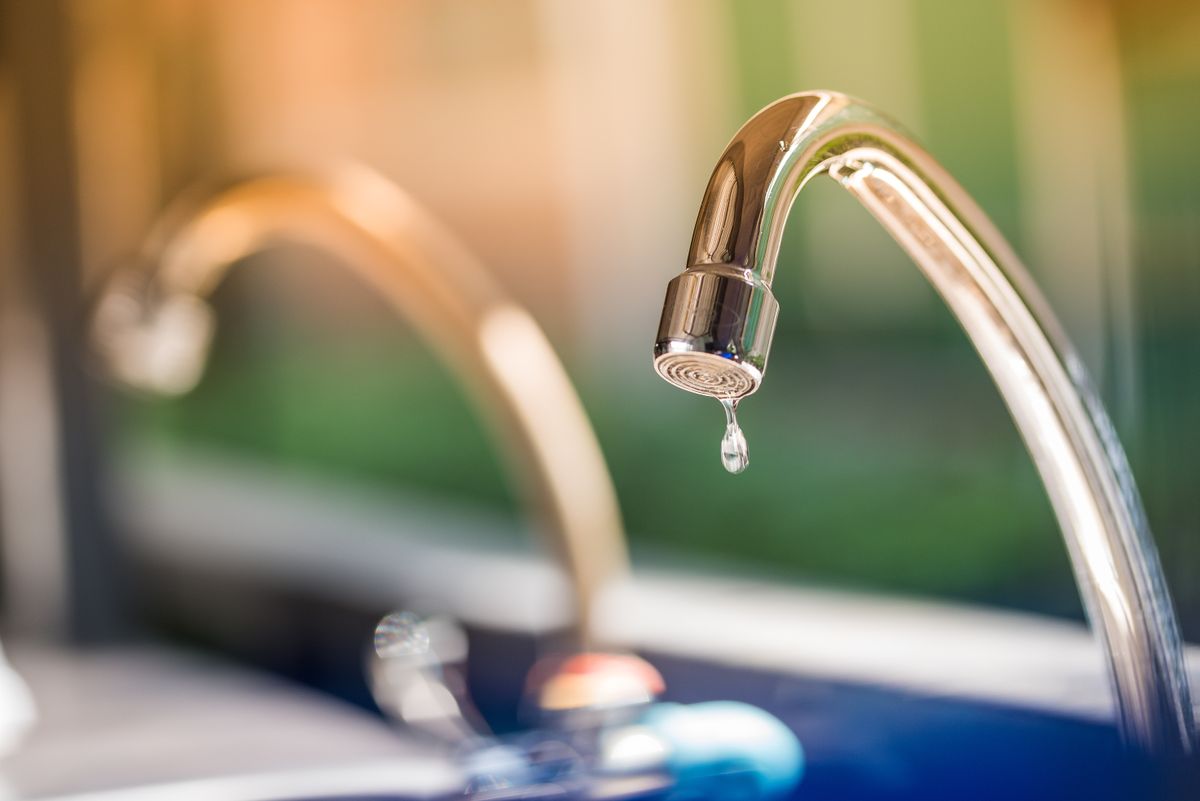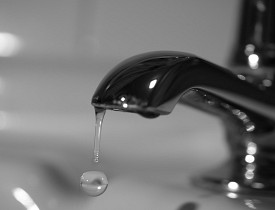My Benefits of Repairing a Broken Faucet
My Benefits of Repairing a Broken Faucet
Blog Article
The content down below pertaining to Why Are My Faucets Dripping (And Can I Fix It Myself)? is truly engaging. Have a go and make your own personal findings.

Leaking faucets might look like a minor hassle, but their effect exceeds just the annoyance of the sound. From wasting water to sustaining unnecessary financial expenses and health threats, neglecting a trickling faucet can cause various consequences. In this write-up, we'll delve into why it's crucial to address this common home concern without delay and efficiently.
Wastefulness of Water
Environmental Effect
Trickling faucets add considerably to water wastefulness. According to the Environmental Protection Agency (EPA), a solitary tap trickling at one drip per secondly can squander more than 3,000 gallons of water each year. This not just stress water resources however likewise affects ecosystems and wild animals depending on them.
Financial Costs
Boosted Water Costs
Past the ecological effect, leaking faucets can blow up water costs significantly. The gathered wastefulness over time converts into greater energy expenditures, which could have been stayed clear of with prompt repairs.
Potential Residential Or Commercial Property Damages
In addition, extended leaking can result in harm to components and surfaces bordering the faucet. Water accumulation can create staining, deterioration, and also architectural concerns if left neglected, resulting in additional repair service expenses.
Wellness Issues
Mold and Mildew Development
The constant visibility of dampness from a dripping faucet creates an excellent atmosphere for mold and mold growth. These fungi not just endanger interior air quality yet likewise pose health risks, specifically for individuals with breathing problems or allergies.
Waterborne Conditions
Stationary water in leaking faucets can end up being a breeding place for bacteria and other microorganisms, increasing the danger of waterborne illness. Contaminants such as Legionella germs thrive in stagnant water, possibly resulting in severe health problems when ingested or inhaled.
Do it yourself vs. Professional Fixing
Benefits and drawbacks of DIY Fixing
While some may attempt to take care of a trickling faucet themselves, do it yourself fixings come with their own collection of challenges. Without appropriate expertise and devices, do it yourself efforts can exacerbate the problem or cause incomplete repair work, prolonging the trouble.
Benefits of Hiring a Professional Plumber
Employing an expert plumber ensures that the underlying cause of the dripping tap is addressed properly. Plumbing professionals possess the expertise and devices to diagnose and repair faucet concerns effectively, saving time and decreasing the danger of further damages.
Step-by-Step Guide to Repairing a Dripping Tap
Devices Called for
Before attempting to take care of a dripping tap, gather the essential tools, consisting of an adjustable wrench, screwdrivers, replacement components (such as washers or cartridges), and plumber's tape.
Typical Tap Issues and Their Solutions
Identify the type of faucet and the particular issue creating the drip. Typical problems include worn-out washers, corroded valve seats, or damaged O-rings. Describe maker directions or on the internet tutorials for detailed assistance on repair work.
Preventive Measures
Regular Upkeep Tips
To avoid dripping faucets, perform routine maintenance such as cleaning up aerators, inspecting for leaks, and replacing worn-out components immediately. Additionally, think about setting up water-saving tools or updating to extra effective fixtures.
Significance of Prompt Repair Works
Attending to dripping faucets as quickly as they're seen avoids additional water wastage and prospective damages, ultimately saving both water and money over time.
Effect On Residential Or Commercial Property Value
Understanding of Well-Maintained Residential Property
Maintaining a building in good condition, including dealing with maintenance issues like dripping taps, boosts its regarded worth and charm among potential customers or lessees.
Impact on Resale Value
Residences with well-kept plumbing fixtures, including faucets, command greater resale values in the real estate market. Resolving leaking faucets can add to a positive impression throughout residential or commercial property inspections and arrangements.
Environmental Obligation
Specific Contribution to Preservation
Taking duty for taking care of dripping faucets straightens with broader initiatives toward water conservation and ecological sustainability. Every individual's actions jointly make a substantial effect on preserving priceless resources.
Lasting Living Practices
By prioritizing timely fixings and adopting water-saving routines, people add to sustainable living methods that profit both existing and future generations.
Conclusion
Addressing a leaking faucet exceeds plain convenience; it's an important step toward saving water, decreasing monetary expenses, and securing health and residential or commercial property. Whether with do it yourself fixings or professional aid, taking action to take care of dripping taps is a small yet impactful way to advertise liable stewardship of sources and contribute to a much healthier, more sustainable future.
How to Fix a Dripping or Leaky Faucet
A leaking faucet is one of the most common problems that homeowners encounter, but it being commonplace doesn’t make it any less annoying. The constant drip drip drip of a leaking bathtub faucet, showerhead, or sink tap can disturb your home’s serenity. Left neglected, a dripping faucet can also result in higher water bills and discoloration or mold growth in your sink or plumbing fixtures.
Fortunately, you don’t have to be a trained plumber to know how to stop a dripping faucet. With some basic tools, replacement parts, and a little patience, leaky faucet repair is a breeze. In this article, we’ll explain what causes dripping faucets and how you can fix them.
What Causes a Leaking Faucet?
Kitchen and bathroom faucets come in all manner of designs, but most involve some combination of valves, O-rings, seals, and washers. The O-ring is usually the weakest link, but any one of these pieces can wear down over time. Heat, moisture, temperature fluctuations, minerals, mold, and movement can contribute to warping and corrosion, breaking the watertight seal. This just comes with the territory of being a homeowner. Everything is always subject to wear and tear, and some component parts of your appliances and fixtures need to be replaced on occasion. At least replacement O-rings are cheap!
More rarely, dripping faucets can be a symptom of excessively high water pressure. Were this the case in your home, you would probably notice that the leak is not isolated to one faucet. Water pressure issues are harder to resolve on your own. We recommend contacting a professional plumber if you suspect your water pressure is too high.
How to Fix a Dripping Faucet
Pipe wrench or monkey wrench Allen wrench set Screwdrivers Old towel or rag Shut off the water.
Before you do anything, you need to turn off the water to keep from drenching your kitchen or bathroom. You should find a valve under the sink and against the wall. Once you’ve turned this valve, try turning the faucet on to confirm that the water source has been cut off.
If you can’t locate your local valve for the faucet you’re working on, you can always shut off the water to the house at the main valve. Of course, this will prohibit anyone from using the sinks, showers, or toilets while you’re working on the faucet that’s giving you trouble.
Plug or block the drain.
You’ll be disassembling the faucet and removing some small bits of hardware. Plug the drain with a stopper or rag to avoid the possibility of a small screw falling into your P-trap.
Take apart the faucet assembly.
There are several varieties of kitchen and bathroom faucets, each with its own manner of assembly. For detailed instructions on how to disassemble your faucet, you can refer to the fixture’s manual or contact the manufacturer. If you know whether you have a ball, disc, cartridge, or compression faucet, you can find detailed schematics online.
In general, you need to begin by removing the faucet handles. You might notice a small screw that you’ll need to remove with a screwdriver or Allen wrench. If you don’t see any visible securing hardware, it’s likely hidden under a decorative cap that can be unscrewed or popped off with flathead screwdriver.
Remove each piece methodically, consulting a schematic when necessary. Take notes or arrange the pieces in such a way to make it easier to correctly reassemble the faucet later.
Remove the cartridge.
Once you’ve removed the handles and securing hardware, you should be able to remove the valve cartridge or stem. Some cartridges will slide right out. Other faucet models will require you to loosen a nut with a pipe wrench before you can remove the valve stem.
Examine the exposed hardware.
With the cartridge or stem removed, inspect the component parts. Check the rubber O-rings for wear and tear. Also examine the seat washer for corrosion or other damage. These pieces are usually the responsible parties for a dripping faucet, but it’s worth inspecting the other component parts while you have the faucet disassembled.
Find replacement parts.
Once you’ve identified which faucet component has failed, find an identical replacement. Your local hardware store should have O-rings, seat washers, and other standard components in stock. If you have a luxury or uncommon faucet, you may have to contact the manufacturer for a replacement part.
It’s a good idea to take your old parts with you to the hardware store so you can compare them with the store’s inventory and be sure you’re purchasing the correct replacement.
Reassemble the faucet.
With your new parts in hand, reconstruct the faucet and handles. Don’t be tempted to overtighten screws or nuts. You might think this could create a better seal, but it can instead damage or bend a delicate part of the assembly and create a new problem for you.
Turn on the water and test the faucet.
The only thing left to do is test your work. Unplug the sink, turn the water back on, and try the faucet. Congratulate yourself on a job well done!
https://www.libertyhomeguard.com/how-to-fix-a-dripping-or-leaky-faucet/

Do you enjoy reading about 4 Common Reasons for a Leaky Faucet? Try to leave feedback further down. We will be happy to see your opinions about this blog entry. We are looking forward to see you back again in the future. In case you enjoyed our blog post plz do not forget to share it. Thanks a lot for going through it.
Report this page